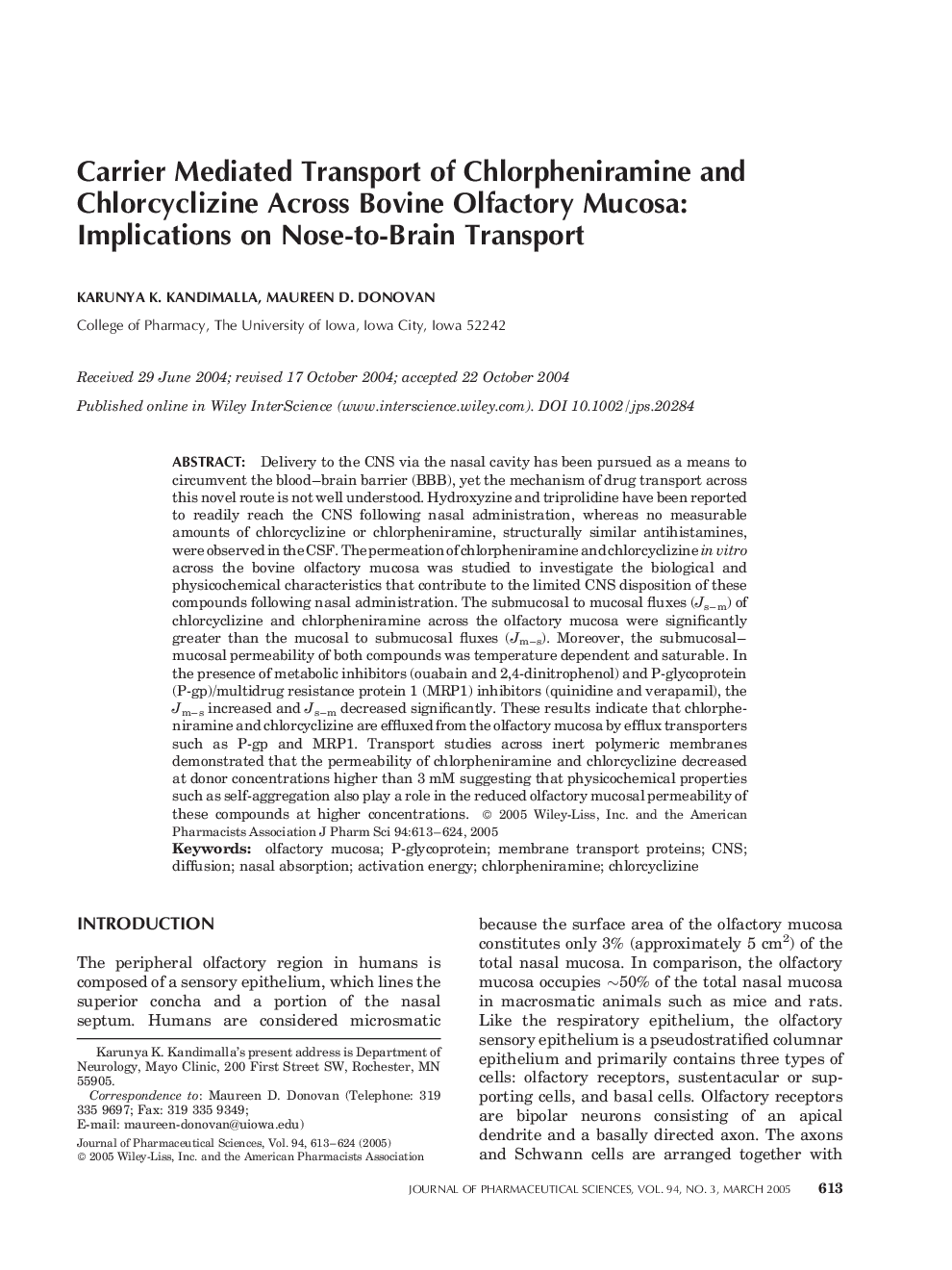| کد مقاله | کد نشریه | سال انتشار | مقاله انگلیسی | نسخه تمام متن |
|---|---|---|---|---|
| 8994339 | 1114390 | 2005 | 12 صفحه PDF | دانلود رایگان |
عنوان انگلیسی مقاله ISI
Carrier mediated transport of chlorpheniramine and chlorcyclizine across bovine olfactory mucosa: Implications on noseâtoâbrain transport
دانلود مقاله + سفارش ترجمه
دانلود مقاله ISI انگلیسی
رایگان برای ایرانیان
کلمات کلیدی
موضوعات مرتبط
علوم پزشکی و سلامت
داروسازی، سم شناسی و علوم دارویی
اکتشاف دارویی
پیش نمایش صفحه اول مقاله

چکیده انگلیسی
Delivery to the CNS via the nasal cavity has been pursued as a means to circumvent the blood-brain barrier (BBB), yet the mechanism of drug transport across this novel route is not well understood. Hydroxyzine and triprolidine have been reported to readily reach the CNS following nasal administration, whereas no measurable amounts of chlorcyclizine or chlorpheniramine, structurally similar antihistamines, were observed in the CSF. The permeation of chlorpheniramine and chlorcyclizine in vitro across the bovine olfactory mucosa was studied to investigate the biological and physicochemical characteristics that contribute to the limited CNS disposition of these compounds following nasal administration. The submucosal to mucosal fluxes (Js-m) of chlorcyclizine and chlorpheniramine across the olfactory mucosa were significantly greater than the mucosal to submucosal fluxes (Jm-s). Moreover, the submucosal-mucosal permeability of both compounds was temperature dependent and saturable. In the presence of metabolic inhibitors (ouabain and 2,4âdinitrophenol) and Pâglycoprotein (Pâgp)/multidrug resistance protein 1 (MRP1) inhibitors (quinidine and verapamil), the Jm-s increased and Js-m decreased significantly. These results indicate that chlorpheniramine and chlorcyclizine are effluxed from the olfactory mucosa by efflux transporters such as Pâgp and MRP1. Transport studies across inert polymeric membranes demonstrated that the permeability of chlorpheniramine and chlorcyclizine decreased at donor concentrations higher than 3 mM suggesting that physicochemical properties such as selfâaggregation also play a role in the reduced olfactory mucosal permeability of these compounds at higher concentrations. © 2005 WileyâLiss, Inc. and the American Pharmacists Association J Pharm Sci 94:613-624, 2005
ناشر
Database: Elsevier - ScienceDirect (ساینس دایرکت)
Journal: Journal of Pharmaceutical Sciences - Volume 94, Issue 3, March 2005, Pages 613-624
Journal: Journal of Pharmaceutical Sciences - Volume 94, Issue 3, March 2005, Pages 613-624
نویسندگان
Karunya K. Kandimalla, Maureen D. Donovan,